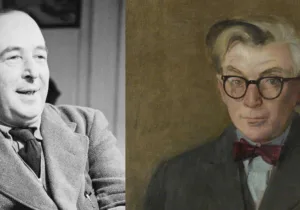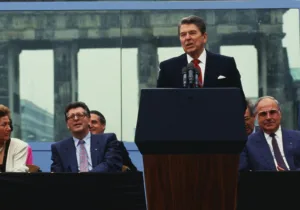The headlines make the faint-of-heart yearn for the good old days, when things were stable and simple. The bad news is literally everywhere.
A deadly respiratory virus originating in China has killed more than 100,000 Americans.
US and South Korean commanders are huddling for emergency talks in response to North Korea’s latest provocation.
Russian and Western troops are locked in dangerous, sometimes deadly standoffs in the Middle East, Africa, and the Americas. Moscow is buzzing US ships and planes, lunging at NATO airspace, and violating treaties. All the while, Moscow’s allies are erasing the sovereignty and independence of a once-free people.
Equally troubling, NATO is dealing with as many internal problems as external threats. Washington and Europe seem to be drifting in opposite directions. In fact, anti-US protests are flaring across Europe.
Speaking of protests, waves of racially charged demonstrations and full-blown riots have scarred dozens of American cities. The throbbing anger has overwhelmed police departments all across the nation—and exposed a deeply fractured and divided America. The military has even been deployed in several cities.
The president—and indeed the federal government—seem unable to bridge the divides or heal the fractures. Even as he tries to end an unpopular war, the president’s popularity is draining away. Sensing America’s exhaustion, the enemy is surging as US troops pull back.
One important caveat: These headlines—and some uglier ones—come not from 2020, but from a period spanning early 1968 to mid-1969.
Shattered
The killing of George Floyd, which triggered deadly protests and riots across the nation, shocked many Americans. Yet our country endured worse as the 1960s staggered to a close.
On April 4, 1968, Martin Luther King Jr. was murdered in Memphis. “Over the next week, riots in more than 100 cities nationwide [would] leave 39 people dead, more than 2,600 injured and 21,000 arrested,” the Smithsonian magazine recalls.
After King’s assassination, National Guardsmen who were deployed in Newark dodged sniper fire for several days.
“In Chicago on the first night of rioting, nine people, all black, were killed,” the Chicago Tribune recounts. “The Army was called in, and thousands of troops descended on the city’s troubled areas. When the fires died out, 162 buildings had been destroyed, 12 people killed and 3,000 arrested.”
Thousands of National Guardsmen were deployed in Baltimore, where six people were killed. In nearby Washington, 13,600 troops fanned out across the nation’s capital to smother rioting. Sadly, Americans had already grown accustomed to DC resembling an armed camp. In late 1967, troops were deployed around the Pentagon—ironically to defend America’s military headquarters from antiwar protestors.
Trying to quell the chaos, the National Guard occupied Wilmington, Delaware, for nine months during that terrible year of 1968.
Sixty-three days after King’s assassination, Robert Kennedy—sharing King’s message of equality and dignity, peace, and justice—was murdered while campaigning for the presidency.
In August, the Chicago police and Illinois National Guard pummeled a throng of antiwar protestors outside the Democratic National Convention—on live television.
In South Carolina, police opened fire on students protesting segregation, killing three and wounding dozens.
In Cleveland, a shootout between black militants and police left seven dead and triggered five days of rioting.
It’s no wonder the Smithsonian magazine called 1968 “the year that shattered America.”
The following year was not any better. The New York Times labeled 1969 “the year of bombings,” as “eight bombings rocked major institutions in New York City” in the span of four months. Between January 1969 and April 1970, according to a Senate committee report, “the United States sustained 4,330 bombings… resulting in 43 deaths.”
Divergent
COVID-19 has claimed more than 120,000 Americans (out of a population of approximately 340 million). Again, this has shocked many Americans. What they forget—or more likely don’t know—is that the 1968 pandemic claimed 100,000 Americans (out of a population of just 200 million); the 1957 pandemic claimed 116,000 Americans (out of a population of just 171 million); the 2017–18 influenza season claimed 95,000 Americans. Put another way: “The overall clinical consequences of COVID-19” are “akin to those of a severe seasonal influenza (which has a case fatality rate of approximately 0.1 percent) or a pandemic influenza (similar to those in 1957 and 1968).” Those words aren’t mine; they’re Anthony Fauci’s.
The numbers and Fauci’s assessment challenge us to ponder the policy reactions triggered by COVID-19. After all, there weren’t any nationwide shelter-in-place orders, church or school closures, business shutdowns, or canceled sports seasons in 1968. But there were in 2020. America’s drastically divergent responses to the pandemics of 1968 and 2020 raise many questions that Americans will wrestle with for many decades.
Reeling
From the assassinations to the riots to the pandemic, death stalked Americans at home in 1968. Things were equally grim overseas.
In January 1968, North Vietnam launched the Tet Offensive, sending US and South Vietnamese forces reeling. In the first 48 hours of the communist offensive, 232 US troops were killed and 900 wounded. By the end of battle, 3,895 American troops were dead. Tet led Washington to the negotiating table and opened the way to the end of the war. The converse has happened in Afghanistan, where negotiations aimed at ending the war opened the way to a Taliban offensive. The Taliban carried out a staggering 4,500 attacks in the 45 days after signing a peace agreement this February.
Twenty-twenty has seen North Korea test missiles, demolish a North-South liaison office on its side of the border, and threaten to cross the DMZ. These are unwelcome acts, to be sure, but they are downright tame compared to what Pyongyang was doing in 1968.
In January 1968, the North Korean navy attacked and boarded the USS Pueblo, which was operating in international waters. The stricken ship and its crew were seized; the crew was beaten, forced to sign confessions, and held captive for 11 months. One crewman was killed.
Related, while Russia’s newfound penchant for testing NATO airspace and buzzing US planes and ships is less than friendly, it’s worth noting that North Korea shot down a US plane in early 1969, killing all 31 Americans aboard.
Today, it is tiny Hong Kong that’s standing up to a communist behemoth. In 1968, it was Czechoslovakia. In March 1968, the Czech government ended censorship, allowed freedom of expression, and opened the way to public debates about the Communist Party. It seemed, for a fleeting moment, that the communist bloc was on the verge of fracturing. But by August, Warsaw Pact tanks would roll into Czechoslovakia, crushing the Prague Spring.
Beijing’s assault on Hong Kong’s independence and freedom, so far, has been less direct and less violent, but the endpoint is the same. As with Czechoslovakia in 1968, America’s options are limited. Yet even as Americans torch the American flag and deface symbols of American sacrifice, the people of Hong Kong are waving the American flag and singing the “Star Spangled Banner.” It’s heartening that some people—somewhere—still believe America, while imperfect, is a great and good country.
Today, we fret over North Korea’s 40 nukes, China’s aggressive behavior, and Russia’s deployments in Ukraine, Syria, Libya, and Venezuela—and rightly so. But it pays to recall that in 1968, the Soviet Union had 30,000 nuclear weapons; an empire that dominated half of Europe and much of Asia, with outposts in the Americas, Africa, and the Middle East; the capacity to challenge America in every domain and every region; and the means to threaten America’s very existence. Back in 1968, Moscow occupied the places it now merely threatens—namely, Eastern Europe.
That brings us to today’s troubles in Europe. Washington may be frustrated with Europe—and Europe frustrated with Washington’s frustration—but the transatlantic waters were far choppier in 1968. Recall that in 1968, NATO was just settling in to its new headquarters in Brussels—because it had been kicked out of its old headquarters in Paris. “Decade in, decade, out,” Derek Leebaert writes in The Fifty Year Wound, the alliance was forever “at the crossroads”—and so it is today.
Reminders
In short, our world is broken and bending toward chaos, as it was in 1968, as it has been since the Fall, as it will be until Christ returns to make all things new. This is not an excuse for washing our hands, Pilate-like, and walking the path of fatalism. Rather, it’s a reminder that we are called to point the way toward calm during the storm—and to answer the chaos with justice, mercy, and humility.
And it’s a reminder that America and the world have gotten through times like this, which suggests we can do it again. That gives me a sense of peace. I suppose that’s why I write and teach about history. And I suppose that’s one of the reasons I miss my grandfathers, who lived through so many awful, dreadful years like 1968, 1941, 1929—and yet found a way to smile and hope for better tomorrows. We would do well, like them, to heed the words of Ecclesiastes: “Do not say, ‘Why were the old days better than these?’ For it is not wise to ask such questions.” And besides, our memories usually fail us.






